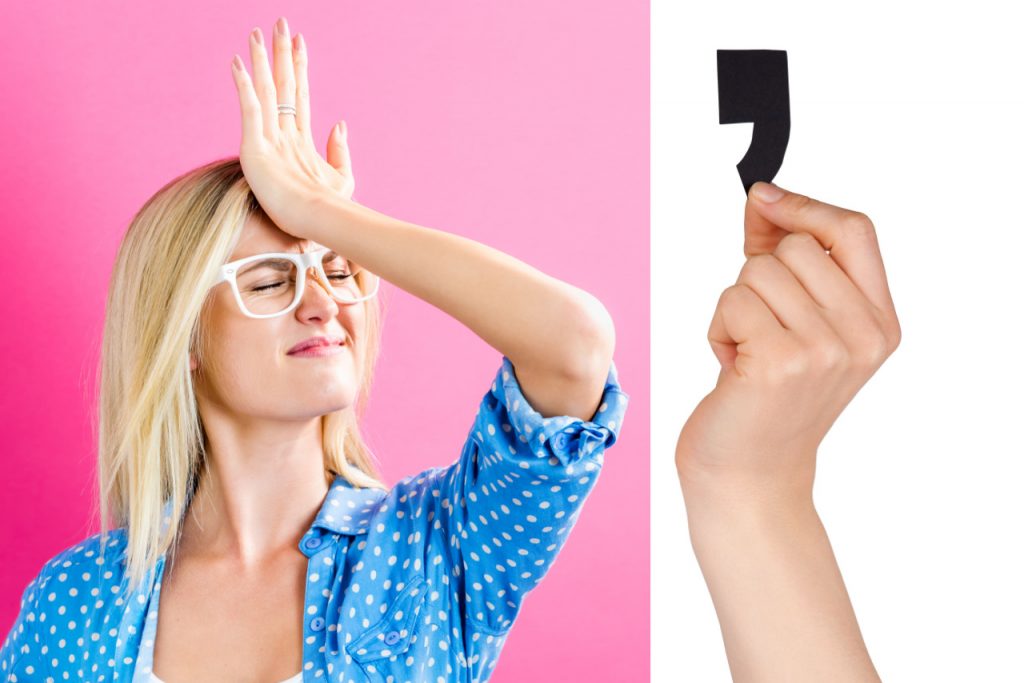In short, the capability to write successfully is invaluable, especially in this high-tech age of physical distance along with intellectual closeness. For successful writing, you need to use words, components, and punctuation properly: There are those who, on discovering an egregiously misplaced comma in the first sentence of a short article, will believe the writer isn’t worth reading. Commas actually are some of the most often abused punctuation represents, and with valid reason. The roles that guide when and when not to place a comma can be a bit cloudy in language and exceptions. So often, though, it comes down to one question: Is it essential?
One of the Funny Comma Mistakes
Commas are, lastly, getting a great compliment. Teachers stress their role in helping readers discern the correct meaning of sentences. In fact, a whole type of T-shirt is based on how essential this little punctuation represents are. Do you look at how the comma changes the significance of the two phrases? The first phrase seems to be as if your grandmother is the main course. The second, with the useful comma, encourages Granny to eat with you. The headline of the T-shirts conveys the message: “Commas save lives.” Unfortunately, commas are misused as often as they’re recognized. Always, Check sentence for comma mistakes, errors, or fails. Do you know? Read below the 5 comma errors and learn the use of commas in writing.
The Most Common Comma Mistakes
Commas have an extensive range of uses, probably more than any other punctuation mark. This is certainly one good reason why that they are so often misused. Knowing the guidelines behind comma utilization, you can get over the doubt that often affects authors when trying to figure out when a comma should be used.
1. Using a comma at the top side of “that”
In most cases, a comma preceding a clause including such as “that” is wrong. However, if you are like many authors, you may find yourself inclined to consist of one. Do not. Avoid creating this typical mistake because “that” is usually used to present an essential, or limited, stipulation, creating the stipulation necessary for the phrase to maintain its significance. For example: INCORRECT: The colors, that were used to beautify the reception desk, were well-matched. CORRECT: The dress that she wore to the wedding was wonderful.
2. Separating associated pairs
When the second aspect of the phrase sets with the information in the first aspect through correlation, a comma is not used. For example: INCORRECT: The article is not only a great work of the written word, but is grammatically sound. CORRECT: The article is not only a great work of the written word but is grammatically sound.
3. Separating a verb from its subject
Never separate a topic from its verb; this creates a sketchy phrase with a pointless stop and is grammatically wrong as well. Below, “is” is the action-word, and its topic is “one of the best factors.” For example: INCORRECT: One of the best factors a writer can do, is to discover how to use commas properly. CORRECT: One of the best factors a writer can do is to discover how to use commas properly.
4. Separating verbs
Sometimes verbs are used in several places in a phrase. At this point, you should not personal them with a comma. Both “jogged” and “walked” are verbs that implement the topic of “she” in the following words. For example: INCORRECT: She ran for 30 minutes, and stepped for 20 minutes. CORRECT: She ran for 30 minutes and stepped for 20 minutes.
5. Offsetting a reliant clause
When one of the conditions in a phrase is dependent on the other and seems to be at the end of the phrase, the dependent clause is not offset by a comma. For example: INCORRECT: Sylvia went to the shop, because she required an egg. CORRECT: Sylvia went to the shop because she required an egg.
How to Fix Common Comma Mistakes?
While all the comma guidelines provided in this article may seem complicated, it is essential to avoid splitting them while doing content writing, essay writing, etc., whether you usually excessive use or underuse commas. The best ways to use commas expertly by learning the individual rules as you go and reading what you write out loud, inserting pauses in the words you talk to restore the commas. If you cannot think about using the stop at a place within a phrase to provide quality, bypass the comma. If the phrase is complicated or a stop seems natural, add the comma. As you gain knowledge, exercise implementing rules, and check your work thoroughly, the perfecting of comma utilization comes normally.
The contemporary use of a comma
When the comma moved from the oral to the written custom, it was not a reference to the duration of reading breaths any longer, but rather a way to make the writing simpler for faster and simpler understanding. With today’s use of the comma came several guidelines on how a comma can join or separate structural elements of a written text, and thus its use (and misuse) improved. Proper usage of comma seems easy enough, but you might be amazed to discover will be creating some of the most common comma mistakes. The guidelines to use comma maybe a little more complicated than you think. How essential is great comma placement? Like appropriate punctuation and sentence structure, appropriate punctuation provides your writing more perfectly, makes your writing simpler to study and understand, helping you project an experienced picture. The most typical comma mistake is excessive use. Keep practicing and do not ignore the little factors. Keep in mind they are the ones that issue here—the main point here, practicing to achieve perfection.
